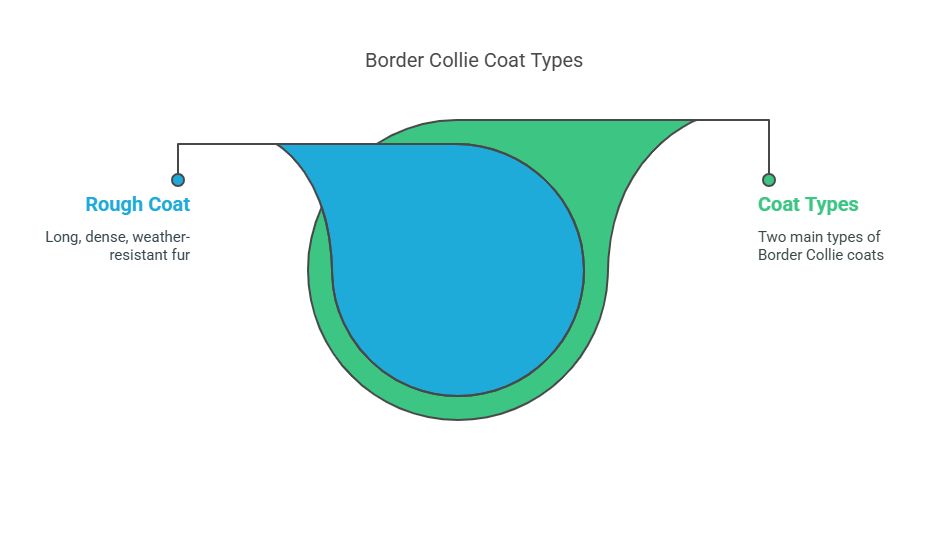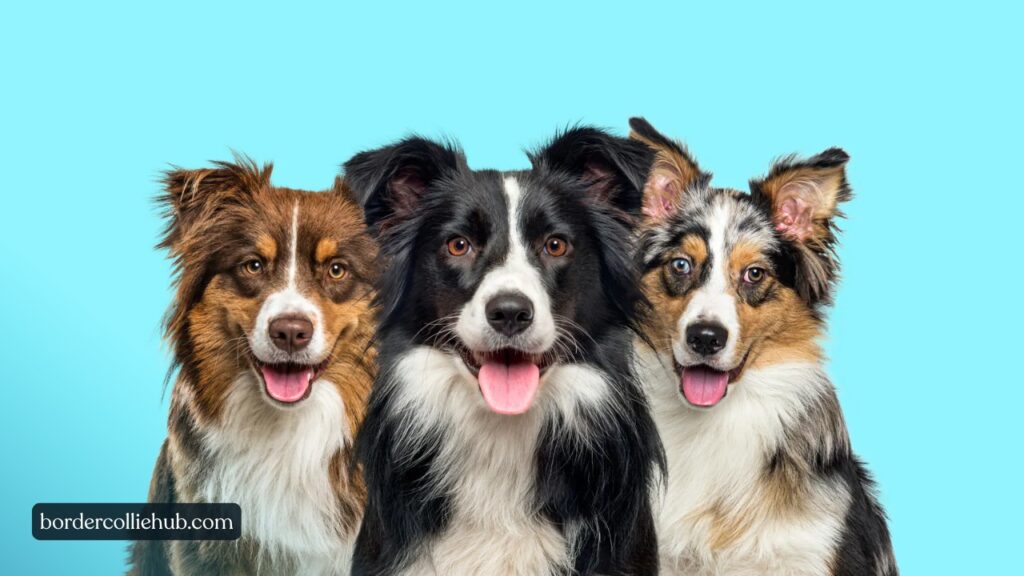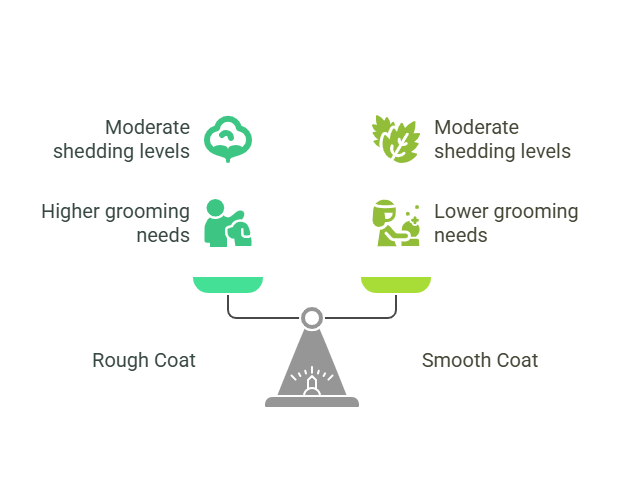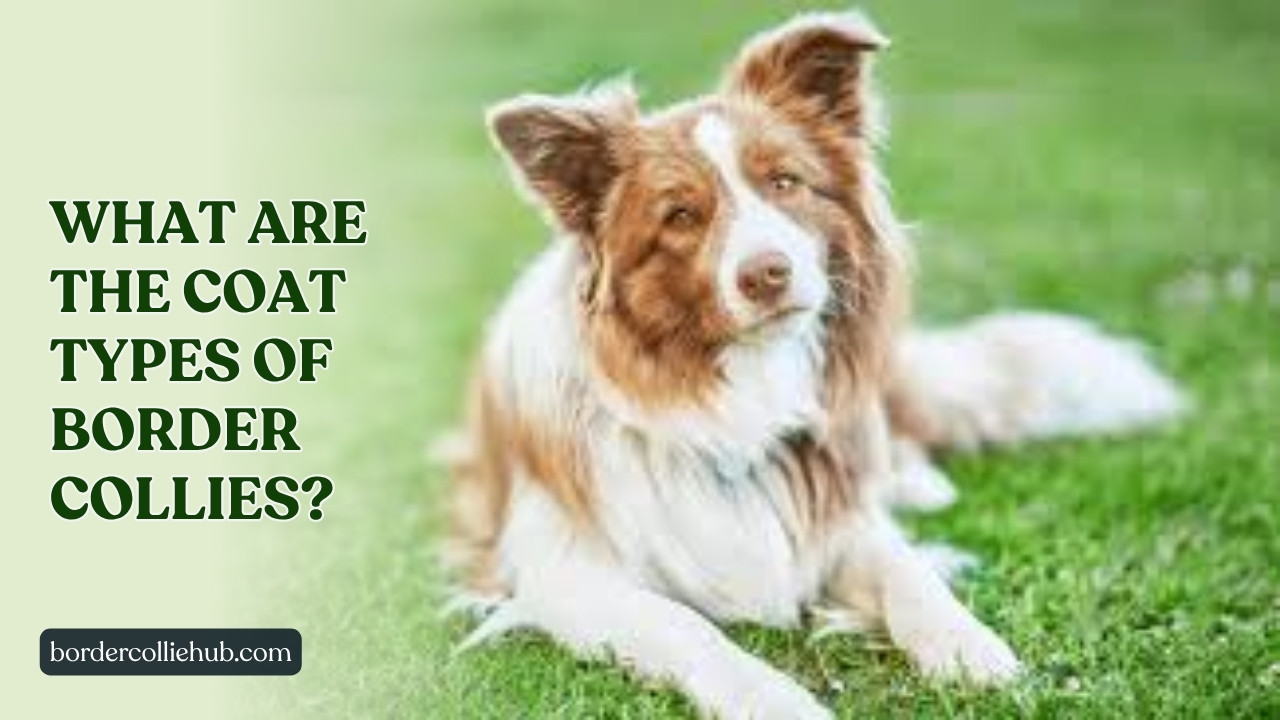What are the coat types of Border Collies? Border Collies mainly have two coat types: rough and smooth. The rough coat is medium to long with feathering, while the smooth coat is short and sleek. Each type has different grooming needs and care tips to keep your dog healthy and comfortable.
Many Border Collie owners wonder about coat types because it affects how they care for their pets. Knowing the difference helps with grooming, managing shedding, and understanding your dog’s comfort. If you’ve ever been unsure about which coat type your Border Collie has or how to take care of it, you’re in the right place. This article will explain the main coat types, their care, and answer common questions. Let’s walk through everything you need to know to keep your Border Collie looking and feeling great.
Understanding Border Collie Coats
What Determines Coat Type?
The coat type of a Border Collie is mainly decided by its genes. Each dog inherits traits from its parents that affect the length, texture, and thickness of its fur. These traits shape whether a Border Collie has a rough or smooth coat. The breed’s history and breeding lines also play a role. Some bloodlines are known for rough coats, while others tend to have smooth coats. This natural variety helps the breed adapt to different climates and environments.
Role of Breeding and Regional Variations
Breeders often select dogs based on coat type to match specific needs or preferences. For example, rough-coated Border Collies are more common in colder areas because their thicker fur provides extra warmth. In contrast, smooth-coated dogs may be favored in warmer regions as their short fur helps them stay cool. These regional differences have helped shape the Border Collie’s coat variations over time. If you want to learn more about how genetics influence coat types, the American Kennel Club (AKC) offers a great overview of Border Collie breed traits here.
What are the coat types of Border Collies?

Rough Coat
The rough coat is the most common type among Border Collies. It has medium to long hair that is dense and weather-resistant. The fur often looks feathered on the ears, legs, and tail. This coat type helps protect the dog in cold or wet weather. Rough coats need regular grooming to avoid mats and tangles. Brushing several times a week is important to remove loose hair and keep the coat healthy. Bathing should be done only when necessary to preserve natural oils.
Smooth Coat
Smooth coats have short, dense, and sleek fur that lies close to the body. This coat type is easier to care for because it does not tangle or mat easily. Smooth-coated Border Collies shed year-round but may shed more heavily during seasonal changes. They require less grooming but still benefit from regular brushing to remove dead hair and keep the skin healthy. Because the fur is shorter, these dogs may need extra protection in very cold weather.
Comparison Table: Rough Coat vs Smooth Coat
| Coat Type | Texture | Grooming Needs | Shedding Level | Best For |
|---|---|---|---|---|
| Rough Coat | Medium to long, feathered | High (regular brushing) | Moderate | Cooler climates |
| Smooth Coat | Short, dense, sleek | Low to moderate | Moderate | Warmer climates |
Other Coat Variations and Traits
Medium or Mixed Coat
Some Border Collies have a coat that falls between rough and smooth. This medium or mixed coat type is less common but still seen in the breed. The fur length is usually moderate, not as long as a rough coat but not as short as a smooth coat. These dogs may have a mix of textures, combining softness with some feathering. The grooming needs of a medium coat vary depending on the dominant traits but generally fall between rough and smooth coat care.
Double Coat Characteristics
Border Collies often have a double coat, which means they have two layers of fur. The topcoat is the outer layer, which is rough or smooth depending on the coat type. Underneath is a soft, dense undercoat that provides insulation. This undercoat helps keep the dog warm in cold weather and cool in hot weather by trapping air close to the skin. Dogs with a thick double coat usually shed more, especially during seasonal changes. Managing shedding with regular brushing is essential to keep the coat healthy and reduce loose fur around the home. For more on double coats and their care, visit PetMD’s guide on dog coats.
Shedding & Seasonal Coat Changes

Typical Shedding Patterns in Border Collies
Border Collies shed year-round, but they have two heavy shedding periods in spring and fall. In spring, they lose their thick winter undercoat to prepare for warmer months. In fall, they grow a thicker undercoat to stay warm during winter. During these times, shedding can be quite heavy and noticeable. Regular brushing helps remove loose hair and prevents mats. Understanding these seasonal changes helps owners prepare and care for their dog’s coat properly.
Best Practices to Manage Shedding
To manage shedding, use a slicker brush or undercoat rake designed for double-coated breeds. These tools help remove dead hair from both the topcoat and undercoat without hurting the dog. Brushing should be done at least once or twice a week, and more often during heavy shedding seasons. Bathing a Border Collie every few months or as needed helps keep the coat clean but avoid over-bathing, which can dry out the skin. Using a gentle dog shampoo recommended by vets is best.
Shedding Comparison Table
| Season | Shedding Level | Description | Recommended Care |
|---|---|---|---|
| Spring | Heavy | Losing thick winter undercoat | Frequent brushing, bath if needed |
| Summer | Light to Moderate | Minimal shedding, coat thins out | Regular brushing |
| Fall | Heavy | Growing thick winter undercoat | Frequent brushing |
| Winter | Light to Moderate | Coat thick, less shedding | Regular brushing |
Coat Care Tips Based on Coat Type
Caring for your Border Collie’s coat properly keeps your dog healthy and comfortable. Each coat type needs a slightly different routine to look and feel its best.
For rough coats, brushing several times a week is important. This helps remove loose hair and prevent mats and tangles. Use a slicker brush or a pin brush to reach the undercoat and outer fur. Bathing should be done only when necessary, using a gentle dog shampoo to avoid drying the skin. Regular grooming also lets you check for skin issues or parasites. More grooming tips can be found at the American Veterinary Medical Association.
Smooth coats need less frequent brushing, about once or twice a week. A bristle brush or grooming glove works well to remove loose fur and keep the coat shiny. Smooth-coated dogs also shed moderately year-round, so brushing helps reduce loose hair around your home. Bathing is similar to rough coats—only when needed with mild shampoo.
In both coat types, trimming around the paws and ears may be helpful to keep your dog neat. Avoid shaving the coat unless recommended by a vet, as the fur protects the skin from sun and cold.
Comparison Table: Grooming Needs by Coat Type
| Coat Type | Brushing Frequency | Best Brush Type | Bathing Frequency | Special Care Notes |
|---|---|---|---|---|
| Rough Coat | 3-4 times per week | Slicker or pin brush | Every 6-8 weeks or as needed | Watch for mats and tangles |
| Smooth Coat | 1-2 times per week | Bristle brush or grooming glove | Every 6-8 weeks or as needed | Shed moderately, less prone to matting |
Regular grooming keeps your Border Collie’s coat clean and healthy.
Common Myths About Border Collie Coats

Many people have questions about Border Collie coats. Some common beliefs are not true and can confuse new or potential owners. Understanding the facts helps you take better care of your dog.
One myth is that rough coats shed less than smooth coats. In reality, both coat types shed a moderate amount, especially during seasonal changes. The difference is mostly in grooming needs, not shedding levels. Another myth is that coat type affects a dog’s intelligence or behavior. Coat type does not change how smart or active a Border Collie is. All Border Collies are known for their intelligence and energy, no matter their coat.
Some also believe you can freely shave a Border Collie to reduce shedding or heat. Shaving is usually not recommended because the coat protects the skin from sunburn and temperature changes. Always ask a vet before trimming or shaving your dog’s fur. For more myths and facts about Border Collies, you can visit the American Kennel Club.
Frequently Asked Questions (FAQs)
Can Border Collie Coats Be Trimmed or Shaved?
Border Collie coats can be trimmed around the feet or ears to keep a tidy look. However, shaving the entire coat is generally not advised. The fur acts as protection from sun and cold weather. If you consider shaving, consult your vet or a professional groomer to understand the risks.
Does Coat Type Affect How Much Exercise a Border Collie Needs?
No, coat type does not affect exercise needs. All Border Collies are energetic and require regular physical and mental activity. Their intelligence and working drive are the same, regardless of their coat.
How to Choose the Right Grooming Tools for Each Coat Type?
For rough coats, slicker brushes and pin brushes work best to reach through the thick fur. For smooth coats, a bristle brush or grooming glove is effective. Using the right tools helps keep your dog comfortable and healthy. You can find more grooming advice at PetMD Grooming Tips.
Comparison Table: Coat Care Myths vs Facts
| Myth | Fact | Explanation |
|---|---|---|
| Rough coats shed less than smooth | Both shed moderately, especially in shedding seasons | Shedding depends on undercoat, not just outer coat |
| Coat type affects intelligence | Intelligence is the same across all coat types | Border Collies’ smart behavior is not coat-related |
| Shaving helps with heat and shedding | Shaving can harm coat and skin protection | Coat protects from sunburn and temperature changes |
Frequently Asked Questions (FAQs)
Can Border Collie Coats Be Trimmed or Shaved?
You can trim certain areas of a Border Collie’s coat, like around the paws or ears, to keep your dog neat. However, shaving the entire coat is not recommended. The fur protects the dog from sunburn, cold, and insect bites. Shaving can also cause the coat to grow back unevenly or damage the natural texture. Always check with a veterinarian or professional groomer before shaving your Border Collie.
Does Coat Type Affect How Much Exercise a Border Collie Needs?
No, the coat type does not change how much exercise a Border Collie requires. All Border Collies are active and intelligent dogs that need plenty of physical and mental stimulation. Whether your dog has a rough or smooth coat, regular walks, playtime, and training sessions are important to keep them healthy and happy.
How to Choose the Right Grooming Tools for Each Coat Type?
For rough coats, slicker brushes and pin brushes work best to reach through the thick fur and undercoat. These brushes help prevent mats and remove loose hair. For smooth coats, a bristle brush or grooming glove is ideal. These tools gently remove dead fur and keep the coat shiny. Using the right brush for your dog’s coat makes grooming easier and more effective.
Conclusion
Understanding the coat types of Border Collies helps you provide the best care for your dog. Whether your Border Collie has a rough or smooth coat, each type has unique grooming needs and shedding patterns. Regular brushing, proper bathing, and seasonal care keep their coat healthy and comfortable.
Remember, shedding is natural and varies with the seasons. Using the right grooming tools and techniques makes caring for your dog easier and reduces loose hair in your home. Always avoid shaving the coat unless advised by a vet, as the fur protects your dog from weather and sun damage.
By learning about coat types and care tips, you can enjoy a happy, healthy Border Collie for years to come.
